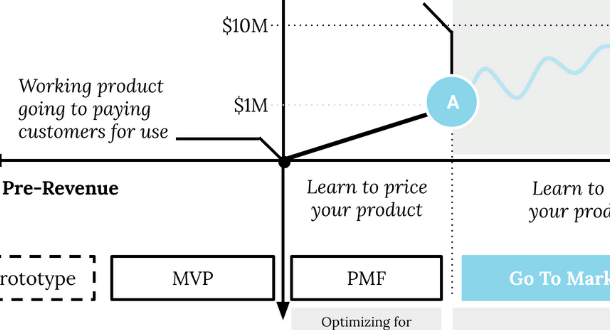Truly thinking outside-in in the commercial process: Here's how to do it
In collaboration with Emerce - Thinking Outside-in, from the customer's perspective, is a widely used principle for improving the commercial process, yet in practice it regularly causes problems. Often this is due to half-hearted implementation and looking at the wrong metrics.
Many companies want to workoutside-in or customer-centric in their commercial process. Yet this is often insufficiently successful. Why? Most companies makeoutside-in thinkinga means, rather than an end. So personas andcontent are created andsocial selling is done , but professionals in marketing, sales and service are driven inside-out onleads, revenue and handling time. In this article, I'll take you through some of these common frictions and offer suggestions for how to resolve them.
Why move from inside-out to outside-in?
Why do you actually need to think outside-in? Because buying is often harder than selling. Just think about the last big purchase you made privately. How much time was spent by yourself? What about the seller? For every hour spent by the salesperson, there was probably at least one day of research by yourself.
If we then translate that to B2B: So if you want to sell more, the main thing you have to do is make the buying process more efficient, not the selling process.
Outside-in metrics
A small nuance: everyone has to report on their business, so the first step is always to have yourinside-out metrics in order. My advice for that: keep it simple. In the table below you can see some commoninside-out metrics for B2B.
You then create the depth withoutside-in metrics. There are many ways to model this, but to keep it clear, I start from the core questions a buyer needs to ask:why,how,what,who andwhere? A number of importantoutside-in metrics can be linked to these . Below is a (non-exhaustive) overview.
| Company | Inside-out | Outside-in | Customer |
|---|---|---|---|
| Marketing | Sessions | Thought leadership outreach: e.g., blog visitors | Why? -Problem research |
| Leads | Engagement on educational content: e.g., white paper downloads |
How?- |
|
| Sales | MQLs/SQLs | Effort product selection : e.g. purchase help downloads ortime to meaningful contact | What? - Compare on problem-relevant features |
| Opp/turnover | Effort purchase : e.g., number of phone calls, appointments, time to signing. | Who - Making and defending choice. | |
| Service | Retention | Customer satisfaction: e.g. reviews/ranking by customers,self-service usage, NPS or CES | Where - Where to go for maintenance and questions |
Marketing metrics.
More sessions andleads are always super. But how many of those really lead to new customers?Outside-in, that's why you want to know how many exploratory buyers you're reaching. Buyers who want theirwhy?andhow? questions answered. Respectively, "why do I need to take action, is my problem urgent enough?", and "how should I go about it and what's involved organizationally?".
For the first question, you writethought leadership content, often in the form of blogs. For the second question, you create educational content, often in the form of downloadable white papers,guides ( buying help), or benchmarks.
Example: a manufacturer of microscopes wrote blogs around the problem of analysis speed for the often overworked lab operators and always referenced educational downloads in them. The blog grew to 20,000 readers a month in a few years. That's the size of a modest trade magazine. The number of educational content downloads grew to just under 400 per month. By focusing on these metricsthey were able to grow their business significantly.
Sales metrics
We all laugh at the movie Glengarry Glen Ross ("always be closing!"), but ultimately steer ourselves purely on theclose rate or sales. Butclosing as quickly as possible does not always lead to the right (profitable) customers.Outside-in thinking, you therefore want to help customers find the right answer as easily as possible to theWhat?: "What exactly do I need for my problem and which characteristics should weigh most heavily in my choice". And additionally theWho?: "Who as a CRM provider is the best fit for my question".
So as ametric you want to be able to measure, "How many hoops does my buyer have to jump through to understand and buy my product or service?".
Example 1: A large provider of forklift trucks created a web shop, including buyer guides. This allowed customers to order their products themselves without having to jump through all sorts of hoops. Th e buyer guides helped them make the right choice. For example, "which mast is needed for which range?", and "which wheels should I have for my surface?".
Example 2: A software company in industry 4.0 directs its SDRs, among other things, on themetric " Time to meaningful call": How long does an interested party have to wait before they can spar substantively about his/her issue?
Service metrics
Bain & company discovered the80:8 principle (pdf): 80% of companies think they deliver a superior customer experience, but only 8% of their customers agree. When you only focus on retention, this problem remains hidden. Therefore, it is important to beoutside-inmeasure whether customers actually feel they are being helped with theirWhere?-questions: "where can I go for questions or issues, and am I happy with this help?".
Example: as a commercial consulting firm, we are in daily contact with our customers. However, we also need to properly measure whether we continue to add enough value so that the customer remains satisfied. That's why we ask every customer to rate us on the HubSpot partner portal, send a quarterly NPS, and track anything below 8.
Conclusion
Thebottleneckof commercial growth lies with your buyer. So growth requires anoutside-in-approach. This is also where you need yourmetricsto this. Of course, the operationalization of this varies by situation. But hopefully the principles and examples discussed here will provide inspiration.

Want to get the most out of HubSpot? Subscribe to our newsletter, follow us on LinkedIn, or attend our HubSpot User Days!
Explore HubSpot User DaysShare this
You May Also Like
These Related Stories

Why it's best to look to your customers (too) to drive growth.

Customer Data Platform (CDP): from nice-to-have to need-to-have

